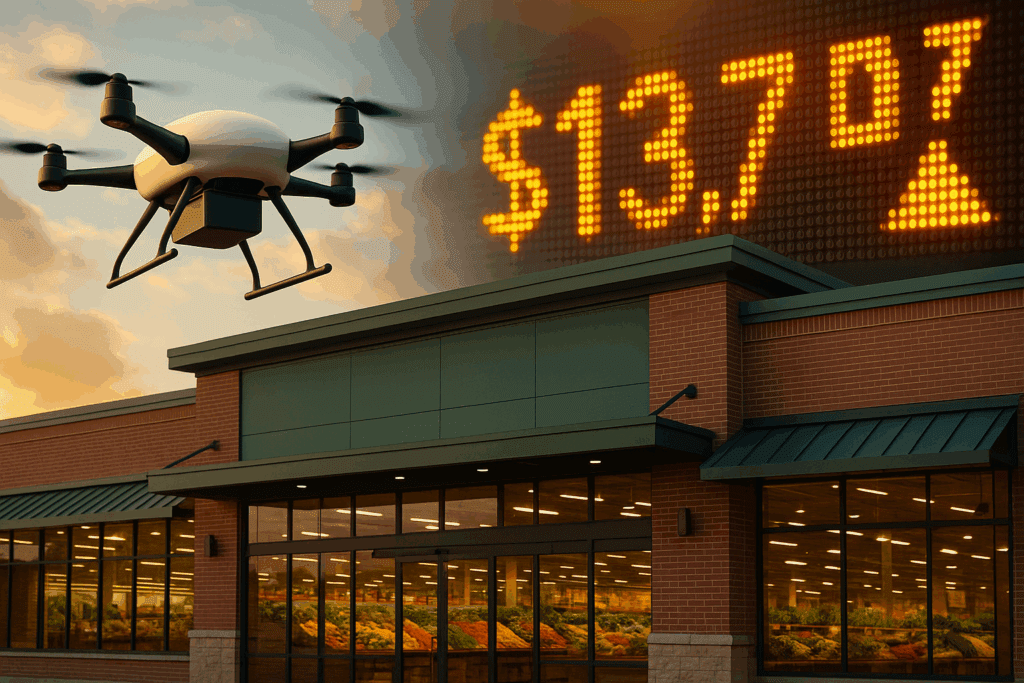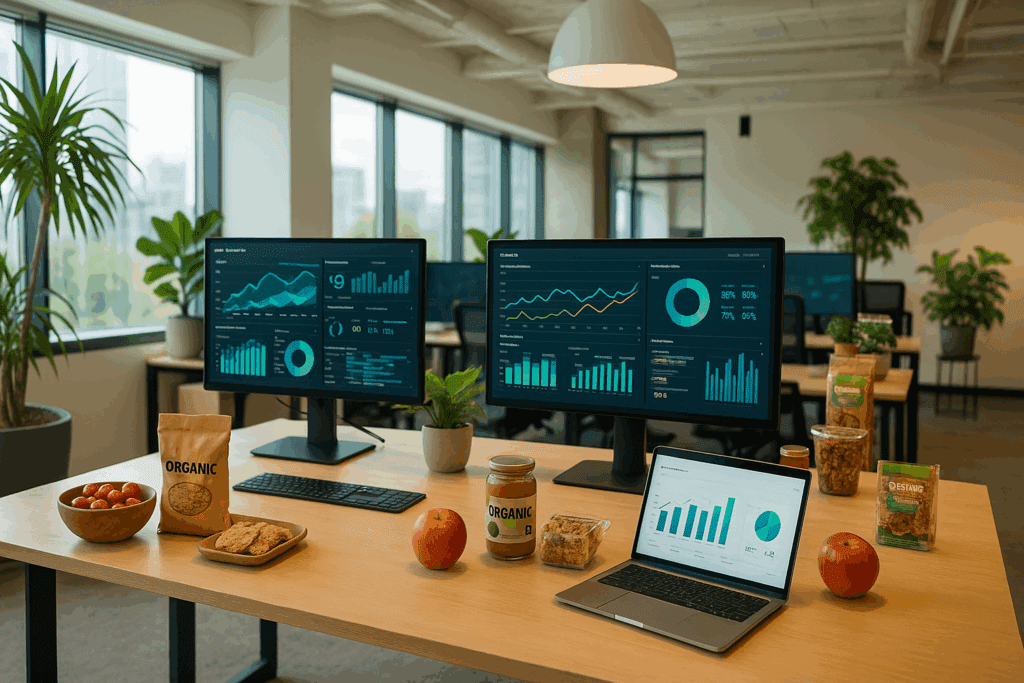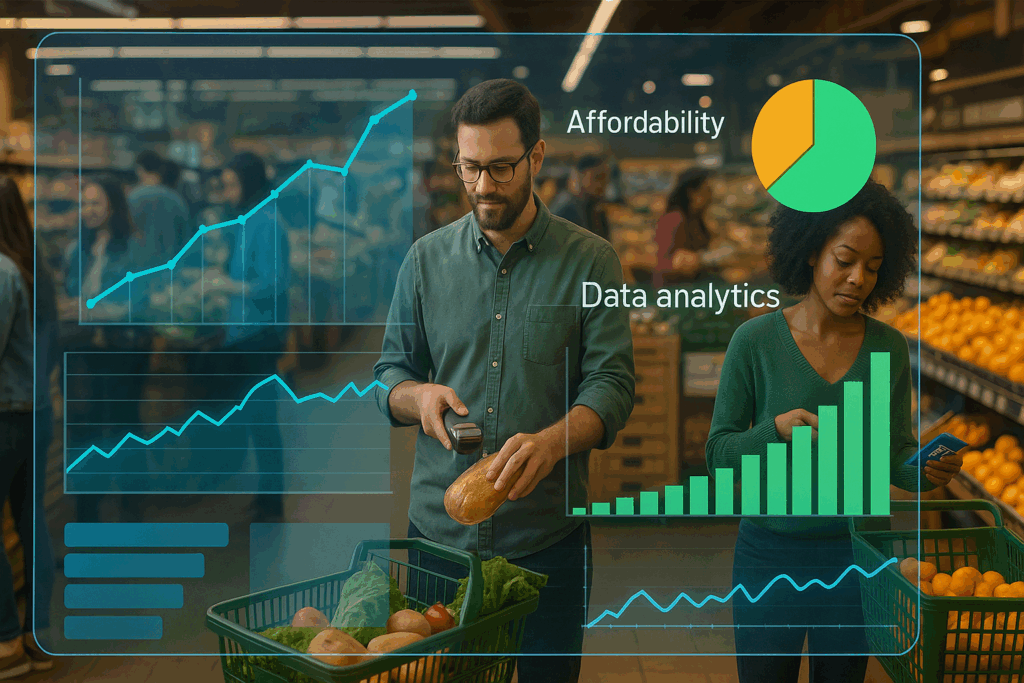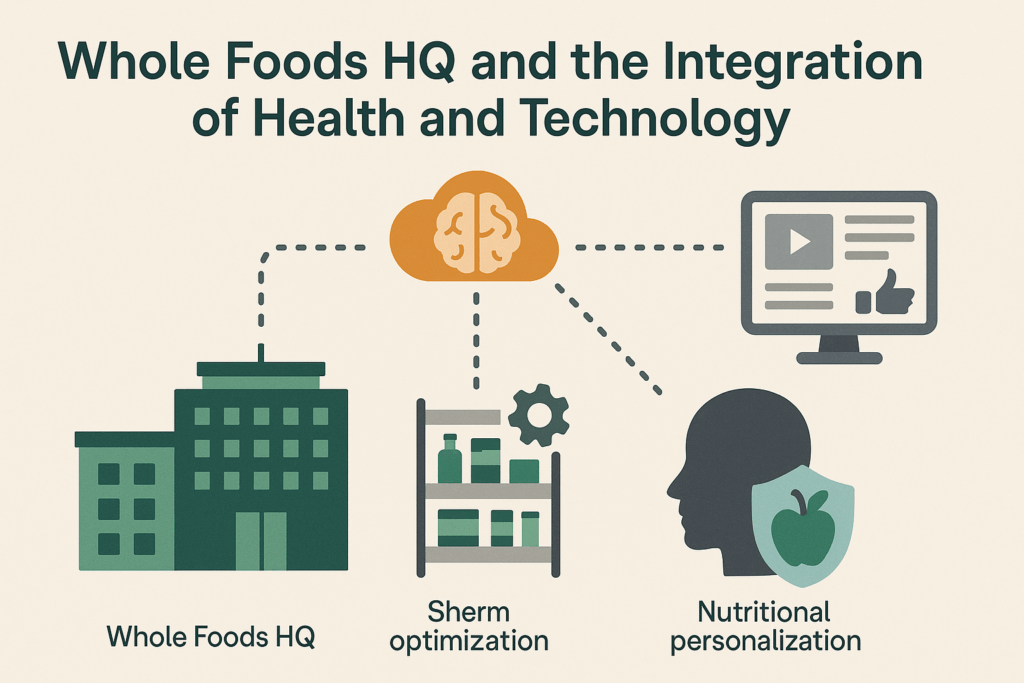The modern food landscape is changing at a rapid pace, and at the epicenter of this shift lies a fascinating intersection of innovation, technology, and mindful nutrition. Inside the Whole Foods Market headquarters, these forces converge under the direction of Amazon, one of the world’s most powerful and data-driven companies. Since Amazon bought Whole Foods Market in 2017, the question of who owns Whole Foods Market has taken on new implications—ones that extend far beyond financials into the realms of access, affordability, and the evolving definition of healthy living.
Located in Austin, Texas, the Whole Foods Market HQ serves as the nerve center of a brand that has redefined grocery shopping for health-conscious consumers. But now, under Amazon’s stewardship, Whole Foods Market Inc. headquarters has become a testing ground for how technology and efficiency can coexist with core values like sustainability, clean eating, and organic sourcing. This article explores the evolution of Whole Foods’ ownership, the cultural changes within the Whole Foods corporate headquarters, and how Amazon’s influence is reshaping the future of health and nutrition for millions of shoppers.
You may also like: How a Whole Foods Diet Supports Sustainable Weight Loss: Expert Tips for Eating Whole Foods to Lose Weight Safely

A New Era Begins: Whole Foods Bought by Amazon
In 2017, when it was announced that Amazon owns Whole Foods, the reaction was both swift and polarizing. The $13.7 billion deal sent shockwaves through the retail world. For some, it was a bold move signaling Amazon’s deeper commitment to groceries and healthy lifestyle markets. For others, it raised concerns about how a tech giant known for automation and price-cutting would manage a brand built on community, quality, and integrity. Yet, this merger marked the beginning of a transformative chapter in the story of Whole Foods ownership.
The Whole Foods Market headquarters became the focal point of sweeping operational changes. Amazon’s initial goal was to integrate its e-commerce strength into Whole Foods’ brick-and-mortar operations, expanding both online reach and in-store efficiencies. These changes were not only visible at the consumer level, such as discounted items for Prime members and faster checkout processes but also in how the Whole Foods head office began aligning with Amazon’s data-driven approach. This combination of values and analytics started to redefine what it means to eat mindfully in a digital era.

Inside the Whole Foods Market HQ: Innovation Meets Integrity
Inside the Whole Foods HQ, now synonymous with the Whole Foods Market Inc. headquarters, innovation pulses through every department. Whether it’s how inventory is tracked or how product placements are optimized, Amazon’s proprietary technologies are being integrated into nearly every operational layer. However, Whole Foods has been careful not to abandon its foundational mission of providing the highest quality natural and organic products.
Executives at the Whole Foods Market corporate headquarters have taken a dual-pronged approach: enhancing data capabilities while retaining a focus on sustainable sourcing and nutritional transparency. The headquarters continues to act as a think tank for health-forward food strategies, often spearheading initiatives that blend science-backed nutrition with ethical supply chains. What’s especially unique about the Whole Foods Market headquarters is how it merges high-tech efficiencies with human-centered values, setting a precedent for other wellness brands seeking balance between innovation and health integrity.

The Culture Shift Within the Whole Foods Corporate Headquarters
Since Amazon bought Whole Foods, there has been a palpable culture shift within the Whole Foods Market HQ. For longtime employees, the changes are multifaceted. While some have embraced new tools and metrics that boost productivity and customer engagement, others worry that the emotional connection to local farmers, community partnerships, and small-batch suppliers may be diluted by large-scale automation.
However, leadership at the Whole Foods main office remains vocal about retaining the company’s original ethos. Initiatives aimed at supporting local growers and maintaining organic certifications have not waned, even as the logistics and backend processes have become more technologically complex. At its core, the Whole Foods Market headquarters still positions itself as a champion of clean, nourishing food—but now does so with a new set of tools designed for scalability.

Whole Foods Revenue in the Amazon Era
One of the most significant outcomes of the acquisition has been the changes in Whole Foods revenue streams. Historically positioned as a premium grocery store with high price points, Whole Foods was often nicknamed “Whole Paycheck” due to its costly offerings. Under Amazon’s ownership, the brand has gradually shifted its pricing strategy, leveraging Amazon’s massive distribution network and economies of scale to offer more competitive pricing.
These pricing changes have helped widen the customer base while also boosting Whole Foods revenue through increased volume. The data-driven pricing models emerging from Whole Foods HQ have allowed the company to better meet consumer demand while maintaining profit margins. The Whole Foods Market headquarters is now not only a hub for innovation but also a control center for financial strategy, where decisions about margins, promotions, and Prime integration are crafted with surgical precision.

Whole Foods HQ and the Integration of Health and Technology
The fusion of Amazon’s technological infrastructure with Whole Foods’ nutrition-centered brand has created a new paradigm for the future of health food retail. At the Whole Foods HQ, algorithms now help identify local trends, seasonal product needs, and emerging dietary interests. This enables the company to stock shelves more strategically and reduce food waste—a win for both consumers and environmental sustainability.
Yet, while the digital transformation has been profound, it hasn’t come at the expense of Whole Foods’ core values. The Whole Foods head office continues to emphasize transparency in labeling, ethical sourcing, and nutritional education. The goal isn’t to replace humans with machines but to empower both staff and customers with better tools for mindful decision-making. In this sense, the Whole Foods corporate headquarters is crafting a blueprint for how retail can evolve responsibly.
Leadership and Vision at the Whole Foods Main Office
As one might expect, the leadership team at the Whole Foods Market HQ plays a critical role in navigating this hybrid identity. Amazon’s data-centric mindset has undoubtedly influenced decision-making structures, but the original Whole Foods leadership has not disappeared. Instead, what’s emerged is a unique collaboration between seasoned food advocates and forward-thinking tech professionals.
The Whole Foods main office now serves as more than just a business headquarters—it’s a cultural hub that reflects the evolving values of today’s health-savvy consumer. Whether addressing climate concerns, updating ingredient policies, or innovating plant-based offerings, leadership remains dedicated to promoting nutrition and wellness without compromising on ethical standards. This balance of mission and modernization is perhaps one of the most powerful legacies Amazon’s ownership will leave behind.

A Global Vision from Whole Foods Market Inc. Headquarters
While Whole Foods started as a single store in Austin in 1980, today its influence extends globally. With Amazon’s logistical muscle, the Whole Foods Market Inc. headquarters has turned into a launchpad for global expansion. Products once only available regionally can now reach international audiences through Amazon’s vast delivery network.
This has increased access to healthy, whole foods for countless people who might otherwise not have easy options for clean eating. And while challenges remain—such as maintaining quality control across continents—the centralized oversight from the Whole Foods headquarters ensures that standards remain high. The same set of nutritional principles and transparency expectations that define stores in the U.S. are increasingly being applied globally, making the Whole Foods HQ a beacon of consistency in the often-fragmented world of international food retail.
Frequently Asked Questions: Whole Foods Market Ownership, Headquarters, and Evolution Under Amazon
1. How has Amazon’s acquisition impacted the long-term vision of Whole Foods Market HQ? Amazon’s acquisition has not only expanded Whole Foods’ digital footprint but also redirected the strategic focus at the Whole Foods Market HQ toward scalable innovation. The long-term vision has shifted from simply being a high-end organic grocer to becoming a tech-enabled food retailer that serves both online and offline customers. At the Whole Foods headquarters, there’s a greater emphasis on predictive analytics, real-time inventory management, and AI-driven consumer behavior modeling—elements previously foreign to the food retail space. While sustainability and nutrition still dominate the brand’s mission, Whole Foods Market Inc. headquarters now also operates as a hub of experimental logistics. As Whole Foods ownership evolves under Amazon, the goal is to blend personalized nutrition with algorithmic precision, fundamentally changing how consumers approach mindful eating.
2. What role does the Whole Foods corporate headquarters play in global supply chain innovation? The Whole Foods corporate headquarters serves as a command center for integrating global supply chains that emphasize both speed and ethical sourcing. With Amazon’s expertise in logistics, the Whole Foods Market headquarters has adopted a streamlined model that uses cloud-based platforms to monitor supplier performance, reduce shipping times, and minimize environmental impact. The Whole Foods main office also houses cross-functional teams tasked with reimagining sustainable farming partnerships and global vendor contracts. This proactive approach ensures that Whole Foods HQ can scale responsibly, maintaining nutritional quality and environmental integrity even as it expands internationally. Ultimately, Whole Foods Market Inc. headquarters sets the tone for the company’s operational ethos worldwide.
3. How does the Whole Foods head office integrate nutrition science into product strategy? At the Whole Foods head office, nutrition science plays a foundational role in shaping product offerings, recipe development, and educational outreach. The Whole Foods Market HQ collaborates with dietitians, food scientists, and holistic health experts to review ingredient standards and vet new product lines. This integration ensures that decisions made at the Whole Foods Market Inc. headquarters are rooted in evidence-based nutritional guidelines rather than fleeting food trends. The approach also includes partnerships with academic institutions conducting longitudinal studies on plant-based diets and whole food eating. As a result, shoppers benefit from options that are not only trendy but also nutritionally sound—a direct reflection of the scientific rigor embedded in Whole Foods Market headquarters operations.
4. What innovations in customer experience originate from Whole Foods HQ? Whole Foods HQ is a laboratory for customer experience innovations that fuse technology with hospitality. One of the latest developments includes a proprietary app-based nutrition coach feature that offers real-time suggestions based on dietary preferences and health goals. These features were conceptualized and piloted within the Whole Foods Market HQ before being rolled out to stores. Additionally, Whole Foods Market Inc. headquarters has worked on refining sensory experience through advanced lighting, in-store layout optimizations, and ambient sound design, all aimed at improving shopper satisfaction. As Whole Foods ownership continues to leverage Amazon’s tech assets, expect more personalized, data-enriched retail experiences emerging from the Whole Foods corporate headquarters.
5. How is the Whole Foods main office shaping future food trends in retail? The Whole Foods main office operates as a forecasting engine for emerging food trends, frequently influencing national and global consumption patterns. Teams at the Whole Foods Market headquarters analyze vast amounts of consumer data to identify shifts in dietary habits, from gut health awareness to regenerative agriculture. Insights generated within the Whole Foods Market HQ often lead to exclusive vendor partnerships and new product launches, giving the company first-mover advantage. Because Amazon owns Whole Foods, the ability to scale trend-based products globally has improved dramatically. This makes the Whole Foods Market Inc. headquarters not only a corporate office but also a trendsetter in the evolving world of health-centric retail.
6. Why does Whole Foods Market HQ focus on hyper-local sourcing despite global reach? Despite its global reach, the Whole Foods Market HQ has doubled down on hyper-local sourcing to preserve community ties and regional authenticity. The Whole Foods head office has dedicated teams that partner with local farmers, bakers, and artisans to bring unique, regionally relevant products to individual store shelves. This strategy enhances freshness and fosters trust, which aligns with the nutritional transparency goals championed by Whole Foods Market Inc. headquarters. By maintaining strong regional networks, Whole Foods HQ ensures that the brand remains grounded even as it scales under Amazon. This approach also mitigates supply chain risks and supports economic resilience in local communities—an often-overlooked benefit of decentralized sourcing.
7. How does Whole Foods HQ influence the brand’s sustainability policies? Sustainability policies at Whole Foods HQ are no longer confined to packaging and recycling initiatives. The Whole Foods Market corporate headquarters has established internal sustainability labs that explore carbon-neutral practices, regenerative agriculture, and zero-waste initiatives. Decisions made at the Whole Foods Market headquarters impact everything from seafood sourcing protocols to animal welfare standards and food loss prevention. As Whole Foods ownership evolves within Amazon, the Whole Foods head office is tasked with preserving the brand’s green reputation while aligning with tech-driven operational goals. This dual mandate ensures that environmental stewardship remains central even in a high-efficiency, high-volume retail model.
8. What influence does Amazon exert over Whole Foods Market Inc. headquarters on data use? Since Amazon owns Whole Foods, data strategy has become a cornerstone of operations at Whole Foods Market Inc. headquarters. Predictive modeling, demand forecasting, and targeted marketing are all executed through advanced analytics platforms shared with Amazon’s retail ecosystem. The Whole Foods headquarters now uses machine learning to predict seasonal inventory needs and optimize store layouts. While this integration has improved efficiency and customer satisfaction, the Whole Foods corporate headquarters still exercises discretion to ensure that data usage aligns with its ethical and nutritional values. Balancing data-driven decision-making with Whole Foods’ commitment to holistic well-being remains a key challenge and area of ongoing innovation.
9. Has Whole Foods revenue changed significantly since Amazon’s acquisition? Whole Foods revenue has experienced a strategic shift since the acquisition, with a focus on volume growth and accessibility. Previously reliant on high-margin, low-volume strategies, the Whole Foods Market HQ has now adopted Amazon’s playbook of scale and affordability. Through the Whole Foods Market headquarters, pricing policies have been revised to attract a broader customer base without diluting product integrity. This transition has resulted in increased traffic both in-store and online, particularly among Amazon Prime members. Revenue streams are now diversified through new verticals such as private labels, health apps, and even prepared meal delivery systems piloted from the Whole Foods main office.
10. What future innovations can we expect from Whole Foods headquarters? Future innovations from Whole Foods headquarters are expected to center around AI-driven health personalization, blockchain traceability for food ethics, and next-gen urban farming partnerships. The Whole Foods head office is actively exploring how biometric data can inform product recommendations for individual shoppers. Additionally, Whole Foods Market HQ is investing in blockchain to ensure transparent tracking of food origin, quality, and environmental impact—a response to growing consumer demand for accountability. These developments signal that the Whole Foods corporate headquarters will remain at the forefront of not just food retail, but also of tech-integrated wellness ecosystems. As Whole Foods ownership continues to evolve, the Whole Foods Market Inc. headquarters will likely serve as a model for the future of ethically conscious, data-enhanced nutrition.

Conclusion: How Whole Foods Ownership Is Transforming Mindful Eating
The question of who is the owner of Whole Foods Market no longer represents just a legal or financial concern—it stands as a symbol of where food, technology, and health intersect. With Amazon firmly at the helm, the Whole Foods Market headquarters has become a laboratory for reinventing what it means to shop and eat well. Whether it’s through refined supply chains, greater accessibility, or data-informed nutritional strategies, the influence of Whole Foods corporate headquarters now radiates far beyond Austin.
Ultimately, what’s happening inside the Whole Foods Market HQ is a redefinition of health-forward retail. By blending Amazon’s digital capabilities with Whole Foods’ legacy of nutrition and sustainability, the Whole Foods head office has created a blueprint for a future where mindful eating is not just aspirational but accessible. For the millions of shoppers looking to nourish themselves and their families, the evolution of Whole Foods ownership is more than a corporate headline—it’s a glimpse into a healthier tomorrow.
Was this article helpful? Don’t let it stop with you. Share it right now with someone who needs to see it—whether it’s a friend, a colleague, or your whole network. And if staying ahead on this topic matters to you, subscribe to this publication for the most up-to-date information. You’ll get the latest insights delivered straight to you—no searching, no missing out.
Further Reading:
Amazon’s Whole Foods Strategy: It’s Not What You Think
Amazon & Whole Foods: The Everything Store for Everyone
Whole Foods Is Becoming Amazon’s Brick-and-Mortar Pricing Lab
Disclaimer
The information contained in this article is provided for general informational purposes only and is not intended to serve as medical, legal, or professional advice. While NewsHealthWatch strives to present accurate, up-to-date, and reliable content, no warranty or guarantee, expressed or implied, is made regarding the completeness, accuracy, or adequacy of the information provided. Readers are strongly advised to seek the guidance of a qualified healthcare provider or other relevant professionals before acting on any information contained in this article. NewsHealthWatch, its authors, editors, and contributors expressly disclaim any liability for any damages, losses, or consequences arising directly or indirectly from the use, interpretation, or reliance on any information presented herein. The views and opinions expressed in this article are those of the author(s) and do not necessarily reflect the official policies or positions of NewsHealthWatch.

